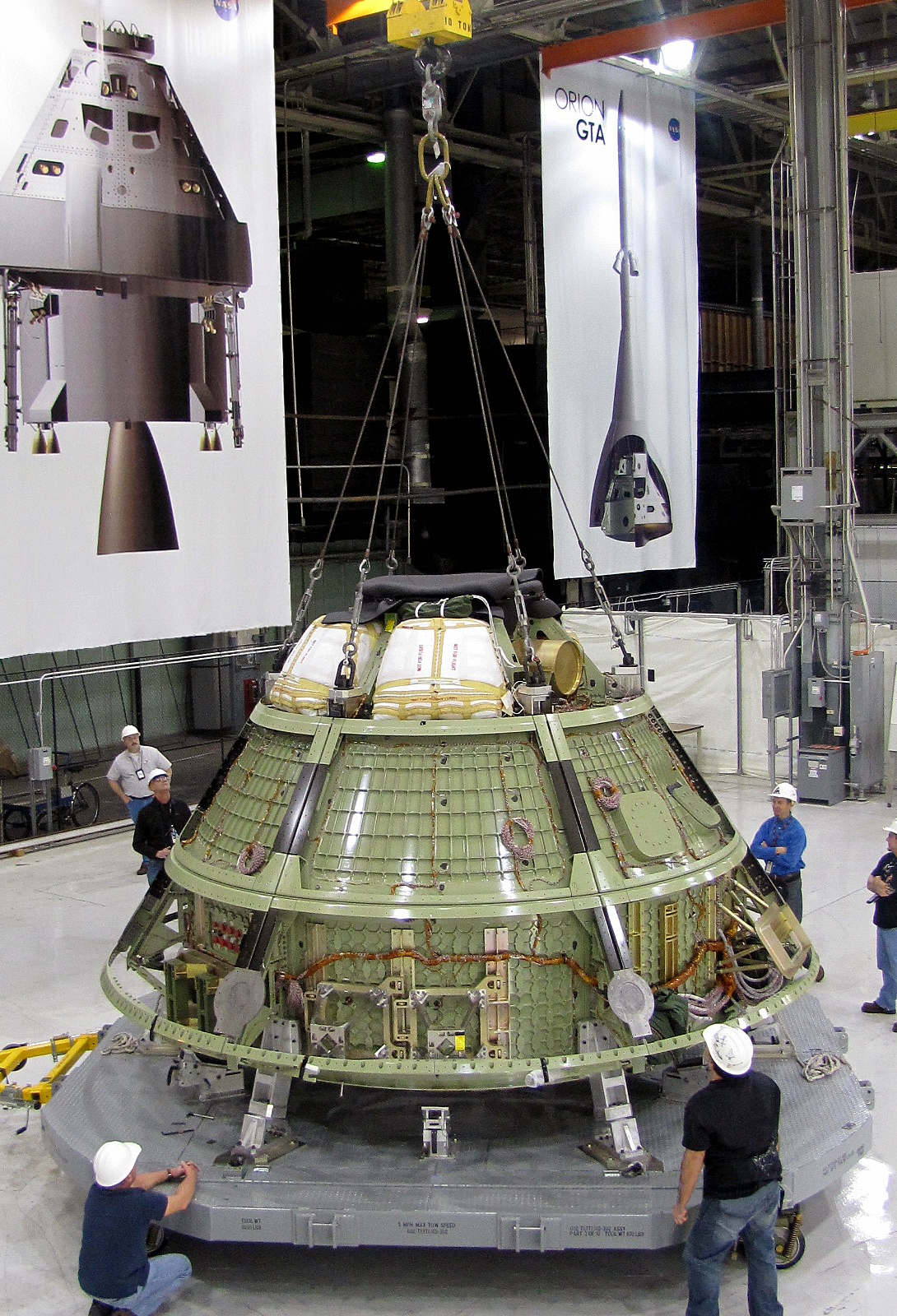NASA's First Orion Space Capsule Ships Out for Big Tests

Engineers packed up NASA's first prototype of its new manned Orion space capsule at a New Orleans assembly plant today (Feb. 10) to begin a grueling round of ground and water tests.
The space agency shipped the Orion space capsule from its Michoud Assembly Facility to the Denver-based testing grounds of aerospace company Lockheed Martin, which is building the new astronaut-carrying spacecraft for NASA. The first unmanned test flight could occur in 2013, Lockheed Martin officials have said.
"This is a significant milestone for the Orion project and puts us on the right path toward achieving the president’s objective of Orion's first crewed mission by 2016," said Lockheed Martin vice president Cleon Lacefield, the company's Orion program manager. "Orion's upcoming performance tests will demonstrate how the spacecraft meets the challenges of deep-space mission environments such as ascent, launch abort, on-orbit operations, high-speed return trajectory, parachute deployment and water landings in a variety of sea states."
Orion up close
Originally designed to launch atop NASA's Ares I rocket, Orion vehicles wereexpected to serve as NASA's successor to its space shuttle fleet, which set to retire this year after 30 years of spaceflight. The Orion space capsule was expected to ferry astronauts to and from the International Space Station.
Unlike NASA's space shuttles, Orion capsules won't be landing on a runway. They are expected to splash down in the ocean like the space agency's early Mercury, Gemini and Apollo spacecraft.
Under NASA's new space exploration program ordered by President Barack Obama, Orion vehicles would primarily serve as escape ships for space station crews, and could play a role in future deep space exploration. Obama cancelled NASA's moon-oriented Constellation program, which included the Ares I rocket, last year and ordered a new plan that favors asteroid and Mars exploration.
Breaking space news, the latest updates on rocket launches, skywatching events and more!
Lockheed Martin, for example, has performed an in-depth study on linking multiple Orion capsules together and sending them on a manned mission to an asteroid. Lockheed officials call the asteroid mission plan "Plymouth Rock."
Sending astronauts to visit an asteroid by 2025 is one of the main goals for NASA's new space plan.
NASA's gumdrop-shaped Orion spacecraft are a bit larger than the space agency's Apollo capsules, with a diameter of about 16 1/2 feet (5 meters) at the widest point. They were originally designed to carry four astronauts to the moon or six astronauts to low-Earth orbit, though NASA scaled down the initial crew size to four people in 2009.
Big tests ahead
The first Orion spacecraft, which NASA shipped out today, will undergo tests at Lockheed Martin's Denver facility to check if it is space worthy enough to safely carry astronauts on deep space missions, Lockheed officials said.
Lockheed engineers will attach the Orion capsule prototype's heat shield and aeroshell covering once it arrives in Denver.
After the Lockheed tests are complete, NASA plans to run water landing tests of Orion at the Langley Research Center in Virginia.
Orion engineers plan to dunk the Orion capsule in a so-called Hydro Impact Basin, which is used to "test, validate and certify all human-rated spacecraft for NASA," Lockheed officials said in a statement.
NASA has already performed several tests of the Orion spacecraft design.
In May 2010, the space agency successfully tested the Orion launch abort system – a rocket-propelled escape tower designed to pull the capsule free of its rocket during a launch emergency.
Last July, the spacecraft's Orion design passed its Phase 1 safety review of NASA's Human Rating Requirements – a rigorous check to determine if the capsule was safe for carrying astronauts.
You can follow SPACE.com Managing Editor Tariq Malik on Twitter @tariqjmalik.

Tariq is the award-winning Editor-in-Chief of Space.com and joined the team in 2001. He covers human spaceflight, as well as skywatching and entertainment. He became Space.com's Editor-in-Chief in 2019. Before joining Space.com, Tariq was a staff reporter for The Los Angeles Times covering education and city beats in La Habra, Fullerton and Huntington Beach. He's a recipient of the 2022 Harry Kolcum Award for excellence in space reporting and the 2025 Space Pioneer Award from the National Space Society. He is an Eagle Scout and Space Camp alum with journalism degrees from the USC and NYU. You can find Tariq at Space.com and as the co-host to the This Week In Space podcast on the TWiT network. To see his latest project, you can follow Tariq on Twitter @tariqjmalik.
